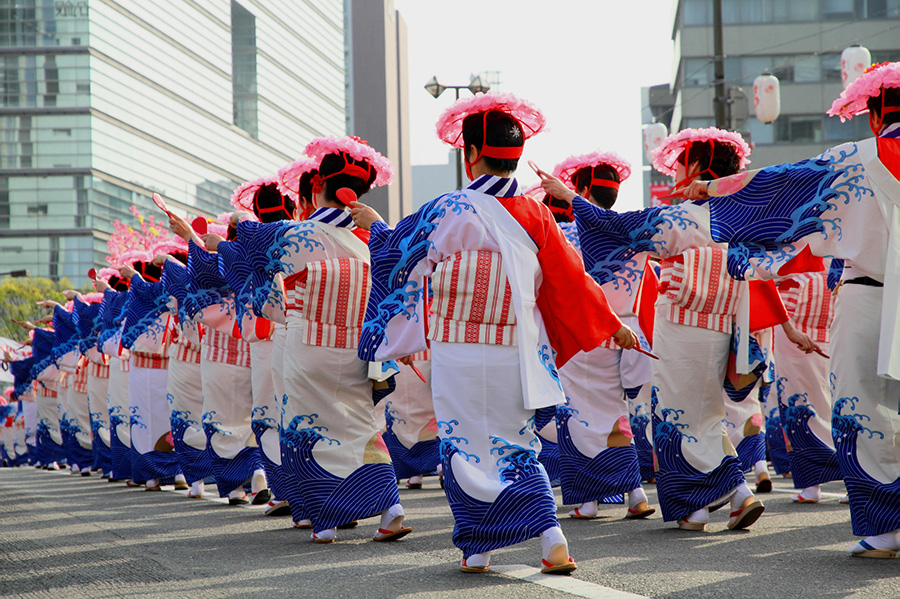
Kids Web Japan
Calendar
Hakata Dontaku Festival

This colorful festival takes place on May 3 and 4 in the city of Fukuoka in northern Kyushu. The festival evolved from matsuribayashi, a folk art widely performed in Kyoto during the Heian period (794-1185). It was performed by farmers and townspeople as a form of New Year's greeting to the local landowner or leader. People dressed up as the three gods of good fortune and paraded to musical accompaniment. The "gods" were followed by young children, who danced to a special chant called iitate.

The Hakata Dontaku elevated the traditional matsuribayashi into a festive occasion, when people from all walks of life can meet and exchange greetings on an equal footing. Today, people from all over the country descend on Fukuoka for the festival, which coincides with "Golden Week." It is one of the most popular destinations for vacationers during the holidays in western Japan.
In the Edo period (1603-1868), decorative floats and platforms showcasing dolls were added. The name of the festival was adopted around this time: it is believed to be derived from the Dutch word zondag (Sunday), which was taken to mean "holiday".

Each year in early May, a 1.2-kilometer stretch of a major thoroughfare is converted into "Dontaku Square," where a parade is held. About 20,000 people take part in the festival over the two days. Some groups use traditional Japanese instruments, while others perform the matsuribayashi with brass instruments.
In addition, thousands of dancers, singers, and other performers are featured on 30 specially built stages in the city of Fukuoka. Closing out the two-day festival are rousing renditions of the Dontaku dance that spectators are invited to join and a gala display of fireworks.
The festival attracts about 2 million people each year.
